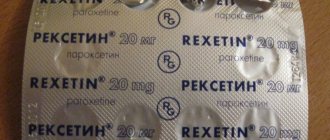Binswanger's disease is one of the subtypes of dyscirculatory encephalopathy - a large group of neurological diseases caused by chronic hypoxia of brain tissue. Usually develops against the background of long-term progressive hypertension and atherosclerosis. The disease is accompanied by various clinical symptoms: deterioration of cognitive functions, motor and muscle disorders. The disease can be treated only in the early stages, while pathological changes in the nerve tissue of the brain are reversible. In the later stages of the disease, therapy is reduced to maintaining basic functions, round-the-clock care and monitoring the patient’s condition. Doctors at the Leto mental health center will conduct a comprehensive examination of the patient and prescribe the correct treatment. If necessary, it is possible to be hospitalized in the hospital of our clinic, where the person is guaranteed due attention from doctors and medical staff, comfort and care from a doctor.
Etiology and pathogenesis
In more than 95% of cases, the underlying cause of Binswanger's disease is hypertension. Although it still remains a mystery to neurologists why some people suffer from progressive symptoms of encephalopathy, while others do not have any changes in intelligence, motor coordination, etc. until old age.
It is believed that the risk of developing such a disease is especially high if:
- sudden changes in blood pressure (BP);
- frequent hypertensive crises;
- episodes of hypertension during night rest (normally, pressure should be at least 10% lower than physiological);
- hereditary predisposition (stroke, chronic hypertension, cognitive disorders in close relatives);
- changes in the rheological properties of blood (increased levels of hematocrit, fibrinogen, blood viscosity, which leads to increased platelet aggregation on the inner surface of the vascular endothelium and narrowing of the lumen of cerebral vessels);
- old age, age-related cerebral amyloidosis;
- diabetes mellitus, which is especially difficult to correct with medication;
- overweight, alcohol abuse, drug use;
- vasculitis (inflammatory process in the vascular endothelium) of an autoimmune or infectious nature;
- mechanical compression of cerebral vessels by a tumor, compression due to spinal curvature, osteochondrosis;
- hematological pathologies (congenital or acquired).
The pathogenesis of Binswanger's disease is based on atherosclerotic damage to the vascular network supplying blood to the white matter of the brain. Periodic fluctuations in blood pressure lead to cerebral circulation disorders and lacunar infarctions - small (up to 15 mm) foci of necrosis.
Classification
Binswanger's disease goes through several stages of development, at the last stage dementia occurs, which, depending on the clinical picture, can be of the following type:
- amnestic - old memories are preserved, but memory regarding current events is impaired;
- pseudoparalytic - there is a memory impairment, an apathetic state of a person;
- dysmnestic - not only memory is impaired, but also physical and psychological reactions.
The development of the pathological process can be in the cortical and subcortical areas. In the first case, even epileptic seizures are possible.
Clinical manifestations
Lacunar infarctions arising against the background of Binswanger's disease are accompanied by:
- deterioration of tactile sensitivity and motor skills of the right or left hand;
- attacks of dizziness, severe weakness and clouding of consciousness;
- headache.
The listed symptoms are reversible. As a rule, clinical manifestations gradually increase over 3–6 days and then decline. Sometimes lacunar infarctions are practically asymptomatic and unnoticed by the person himself.
The danger is posed by repeated focal lacunar infarctions, which lead to symptoms typical of Binswanger's disease. This:
- A gradual increase in cognitive dysfunction up to the development of dementia, which is accompanied by memory loss, personality degradation , the formation of delusional ideas (usually persecution, harm, hypochondriacal content), hallucinosis, replacement of true memories with false ones, etc.
- Walking disorders. In the initial stages of the disease, a shuffling, unsteady gait and swaying when walking are noted. As the condition worsens, such pathological changes progress to the point of complete inability to walk or even stand. In this case, the sensitivity of the body and limbs can be preserved, and the functions of the cerebellum are not lost.
- Caused by neurological pathology, periodic urinary incontinence , which in the later stages of the disease is transformed into a total loss of control over urination and defecation.
- Emotional-volitional disorders: apathy, indifference, coldness towards other family members, deterioration of intellectual abilities, thirst for knowledge, etc.
- Speech and hearing impairments due to pathology of the innervation of the muscles of the palate, vocal cords, and tongue.
Initial symptoms of pathology: when to see a doctor
- memory deterioration: at first a person cannot remember and reproduce recent events and information, but gradually the patient begins to forget what happened much earlier;
- frequent falls;
- sleep disorders;
- headache, accompanied by ringing and noise in the ears, blurred vision;
- weakness, decreased performance, increased fatigue, intolerance to physical and mental stress;
- imperative urge to urinate, involuntary loss of urine;
You should also pay attention to excessive irritability, mood swings (but depression, despondency, melancholy usually predominate), distractibility, and forgetfulness. Such manifestations are especially dangerous with concomitant hypertension.
Symptoms
The clinical picture is characterized by progressive dementia, volitional, emotional deviations, dysfunction of the musculoskeletal system, and pelvic disorders. Standard household tasks (laundry, cleaning, shopping, cooking, reading) become difficult for the patient to complete. There is a weakening of short-term and long-term memory. Symptoms of vascular dementia:
- decreased ability to work, fatigue;
- constant headaches, sleep disturbances;
- progressive emotional emptiness, narrowing of the circle of interests, spontaneity;
- dementia (memory impairment; disorientation; aggression or euphoria; disorientation; apathy or inability to control emotions; judgment disorders, personality changes);
- abrasion - dysfunction of walking (shambling, mincing, “magnetic” or small steps gait; initiation of walking (difficulty at the beginning of walking); postural dysfunction (instability when turning); increase in base of support);
- overactive bladder, enuresis, uncontrolled bowel movements;
- pseudobulbar syndrome - dysarthria (pronunciation defects caused by impaired innervation of the speech apparatus), dysphonia (qualitative voice disorders, which are manifested by nasality, hoarseness, hoarseness), dysphagia (swallowing disorder).
Diagnostics
The only reliable way to confirm the suspected diagnosis is to do neuroimaging using CT or MRI. The following changes are clearly visible on the tomogram results:
- leukoaraiosis: decreased density of the white matter of the brain;
- multiple foci of lacunar infarctions;
- expansion of the cerebral ventricles and subarachnoid space.
The following are recommended as auxiliary examination methods:
- Dopplerography and/or duplex scanning of cerebral vessels;
- electrocardiography and Echo-CG;
- daily blood pressure monitoring;
- general clinical blood and urine tests (lipid profile, coagulogram required).
Additionally, psychological testing is carried out to determine cognitive and intellectual functions, memory, and the ability to evaluate and analyze what is happening. It is also recommended to conduct research to identify markers of hereditary diseases that can cause similar symptoms.
Cost of services
| CONSULTATIONS OF SPECIALISTS | |
| Initial consultation with a psychiatrist (60 min.) | 6,000 rub. |
| Repeated consultation | 5,000 rub. |
| Consultation with a psychiatrist-narcologist (60 min.) | 5,000 rub. |
| Consultation with a psychologist | 3,500 rub. |
| Consultation with Gromova E.V. (50 minutes) | 12,000 rub. |
| PSYCHOTHERAPY | |
| Psychotherapy (session) | 7,000 rub. |
| Psychotherapy (5 sessions) | 30,000 rub. |
| Psychotherapy (10 sessions) | 60,000 rub. |
| Group psychotherapy (3-7 people) | 3,500 rub. |
| Psychotherapy session with E.V. Gromova (50 minutes) | 12,000 rub. |
| TREATMENT IN A HOSPITAL | |
| Ward for 4 persons | 10,000 rub./day |
| Ward for 3 persons | 13,000 rub./day |
| Ward 1 bed VIP | 23,000 rub./day |
| Individual post | 5,000 rub. |
| PETE | 15,000 rub./day |
This list does not contain all prices for services provided by our clinic. The full price list can be found on the “Prices” , or by calling: 8(969)060-93-93. Initial consultation is FREE!
Forecast
Subcortical atherosclerotic encephalopathy has a poor prognosis . With timely, correct, systematic therapy, short-term remissions are possible. The disease is characterized by a chronic course, but the symptoms can be adjusted, and the disease can be kept under control. The patient is under supervision not only from a neurologist, but also from other specialized doctors. This makes it possible to control the general condition, mental background, and concomitant diseases. The life expectancy of patients with vascular dementia ranges from 10 to 20 years.
Treatment of Binswanger's disease in medical
First of all, antithrombotic and antihypertensive therapy is selected. Systolic blood pressure must be kept within 130–150 mm Hg. Acetylsalicylic acid is considered the safest drug for normalizing the rheological properties of blood. Aspirin, which is familiar to many, can cause complications in the digestive tract, so enteric-coated tablet forms are recommended at a dose of 1 mg per 1 kg of weight.
- Drugs are prescribed to: improve antioxidant function;
- lipid profile correction;
- maintaining, and ideally restoring, cognitive functions;
- stimulation of cerebral circulation and protection of nerve cells from hypoxia;
- correction of urinary function, improvement of gait coordination.
Important!
Failure to achieve results from drug therapy is an indication for surgical intervention for vascular bypass surgery.
Preventive non-drug therapy
Knowing the possible risk factors, certain rules of prevention should be followed by all patients with hypertension. First of all you need to:
- Adhere to a strict diet , which is especially important if you are overweight. Since it is quite difficult to correctly create a diet on your own and calculate the calorie content of dishes, we recommend consulting a professional nutritionist. The specialist will fully write out the menu, taking into account not only the patient’s health condition, but also his wishes, answer all questions and be constantly in touch.
- Regular blood pressure monitoring. The most accurate readings are provided by a mechanical tonometer, but such a device is not suitable for independent use. And if there is no one to help the patient, we advise you to acquire an electronic device. The measurement results must be recorded in a special diary.
- Refusal (or at least strict limitation) from caffeine-containing drinks , strong tea, and alcohol.
- To quit smoking , if you cannot overcome the craving for nicotine on your own, we will invite you to a consultation with a narcologist.
- Stick to a daily routine , rest more, and engage in feasible physical activity.
- Massage of the cervical spine to eliminate occlusion and improve blood circulation.
As a rule, outpatient medication and physical treatment are sufficient to correct the main symptoms of the disease. But if necessary (for example, with the progression of cognitive dysfunction, the inability to fully care for the patient), our doctors offer hospitalization in a hospital equipped with everything necessary. To make an appointment or call a doctor at home for a consultation, call us at 8(969)060-93-93 at any time. With this pathology, even a day of delay can be fatal!
Initial signs
- At the initial stage of its appearance, leukoencephalopathy of the brain has a hidden course. The person may appear to others as more distracted, awkward, or self-absorbed. In some cases, people experience increased tearfulness and irritability. They have problems with sleep - both falling asleep and intermittency of night rest.
- Additionally, muscle tone increases, which is manifested by convulsive twitching of individual muscle subgroups and eye movements. Speech difficulties arise - pronunciation and clarity of sounds suffer. Even short sentences and fame require some effort.
- Intellectual activity gradually deteriorates - the patient can still perform his usual work duties, but if it is necessary to learn new material, he has difficulties. Dementia at the initial stage is manifested by forgetfulness, as leukoencephalopathy progresses it will become more and more noticeable - the person loses his ability to work.











